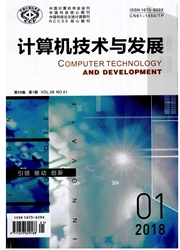

 中文摘要:
中文摘要:
以便利用异步的察觉到信息,减轻第二等的用户的察觉到的开销(怀疑) 并且改进察觉性能,一个传感器察觉到的帮助节点的异步的合作光谱(SN-ACSS ) 为认知无线电(CR ) 的计划网络(CRN ) 被建议。在 SN-ACSS,每苏被传感器节点(SN ) 包围,它异步地基于贝叶斯的熔化规则做难决定和软决定而不是苏。苏联合这些软决定并且做本地软决定。最后,熔化中心(FC ) 熔化播送从的本地软决定与不同重量系数怀疑达到最后的软决定。而且,不同 SN 有贡献也是的不同察觉到的察觉性能和事实上的准许的乐队占有的统计的影响在 SN-ACSS 考虑了计划。数字结果证明与察觉到的常规同步合作光谱(SCSS ) 和存在 ACSS 计划相比, SN-ACSS 算法与 SN 的一样的数字完成更好的察觉表演和更低的费用。
 英文摘要:
英文摘要:
In order to take advantage of the asynchronous sensing information, alleviate the sensing overhead of secondary users (SUs) and improve the detection performance, a sensor node-assisted asynchronous cooperative spectrum sensing (SN-ACSS) scheme for cognitive radio (CR) network (CRN) was proposed. In SN-ACSS, each SU is surrounded by sensor nodes (SNs), which asynchronously make hard decisions and soft decisions based on the Bayesian fusion rule instead of the SU. The SU combines these soft decisions and makes the local soft decision. Finally, the fusion center (FC) fuses the local soft decisions transmitted from SUs with different weight coefficients to attain the final soft decision. Besides, the impact of the statistics of licensed band occupancy on detection performance and the fact that different SNs have different sensing contributions are also considered in SN-ACSS scheme. Numerical results show that compared with the conventional synchronous cooperative spectrum sensing (SCSS) and the existing ACSS schemes, SN-ACSS algorithm achieves a better detection performance and lower cost with the same number of SNs.
 同期刊论文项目
同期刊论文项目
 同项目期刊论文
同项目期刊论文
 Perturbation homotopy method for solving variational inequalities with general constraintson an unbo
Perturbation homotopy method for solving variational inequalities with general constraintson an unbo 期刊信息
期刊信息
